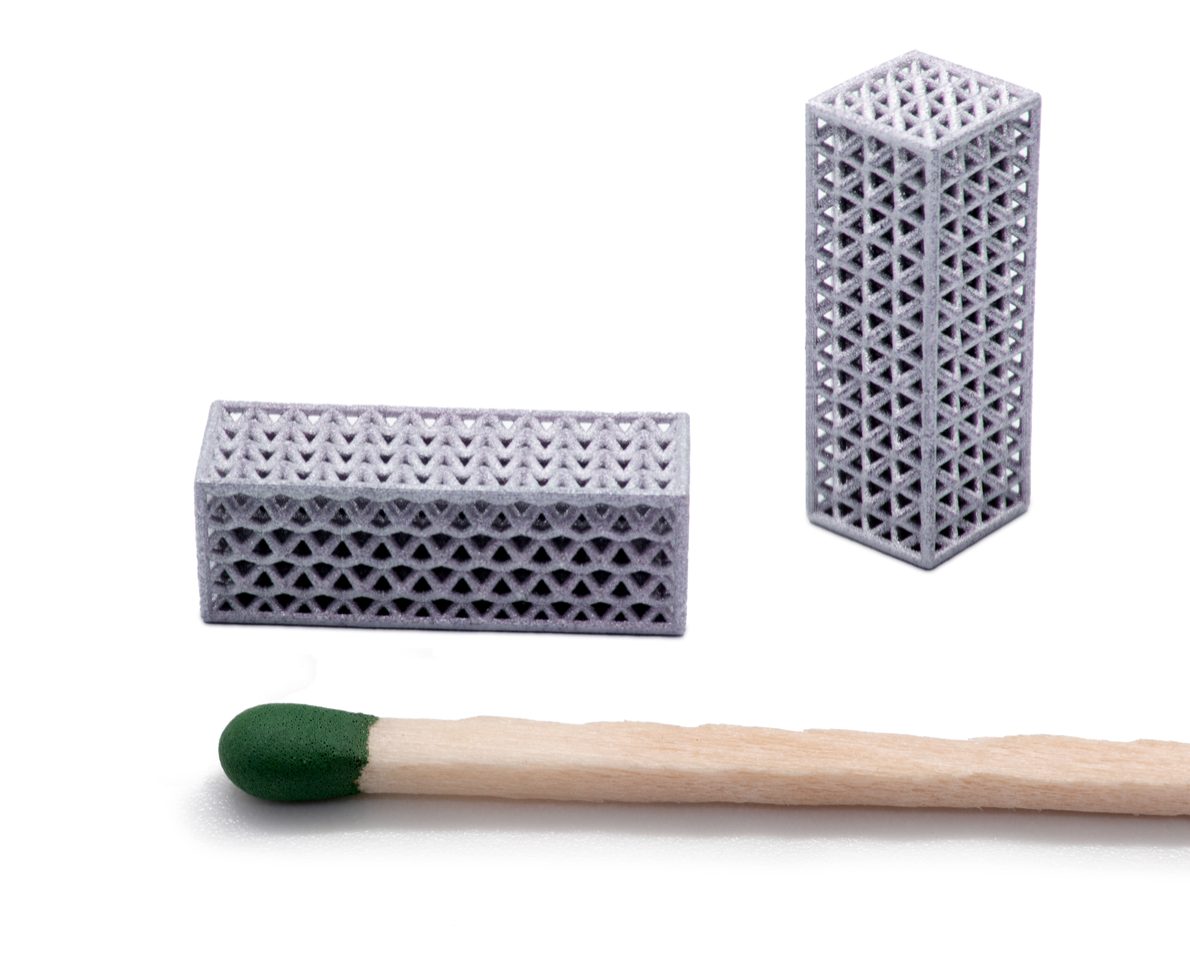Students use micro 3D printing technology for experiments related to the International Space Station.
When a team of students, led by Rohan Sachdeva (12th grade student) and Daisy Zeng (11th grade student), from the International Space Station Research (ISS) Lab Program at Valley Christian High School needed millimeter-scale lattices for an experiment on capillary action in microgravity, they turned to Qualified3D to get parts printed using micro-stereolithography. The lattices designed by the San Jose, CA based team had struts as thin as 0.5mm in diameter, and micro-SLA seemed to be the only process able to produce parts with sufficient accuracy.
While dimensionally precise, parts made from photopolymer resin were not an ideal match for the requirements of space flight due to their lack of resistance to vibrations, low temperatures, and heat. Metal offered a better set of properties for the ISS experiment, but unfortunately the lattice design was not printable with conventional metal powder-bed fusion and binder-jetting 3D printing technologies.
Enter Lithography-based Metal Manufacturing, or LMM for short, a new 3D printing process which utilizes the principle of photopolymerization, where a metal powder is dispersed in a photosensitive resin and selectively polymerized by a DLP projector. This technology is capable of producing parts with extremely thin walls (125µm) and smooth surfaces (2-5µm surface roughness before polishing) in a variety of metals including stainless steel and titanium.
Germany-based startup Metshape GmbH is recognized globally for its expertise in 3D printing and sintering LMM micro parts. It also sells its services to US customers through Qualified3D.
“Some of our students discovered that the miniature lattice design was printable using the LMM technology and proactively reached out to them,” says Emeka Okekeocha, ISS Program Manager at Valley Christian Schools in San Jose. “After a technical review, we accepted the proposed change from acrylate resin to stainless steel.”
The students in the ISS Research Lab received their parts within a few weeks and are now looking forward to putting them to use for their experiment in microgravity. The experiment package should be launched up to the ISS in mid- February of 2023 and should begin returning data in March of 2023.
David Kou, an 11th grade member of the team at Valley Christian Schools says, “We are very thankful to Qualified3D for how they always quickly responded to our requests and questions. Even with the many changes we requested, the parts were still delivered on time, which helped us to transition smoothly between planning and building our microgravity experiment.”
On a broader level, controlled capillarity in 3D printed metallic lattices is expected to open new technical possibilities in future outer space applications such as gas filtration, aerosol sample collection, and temperature management. Another application is being able to passively control where water is in a container, since without this technology, it would be difficult to predict the location of the water in microgravity which has applications in plant growth.
Find out more about Qualified3D at qualified3d.com.
For more information about Metshape, please visit metshape.de.
Subscribe to our Newsletter
3DPresso is a weekly newsletter that links to the most exciting global stories from the 3D printing and additive manufacturing industry.






















